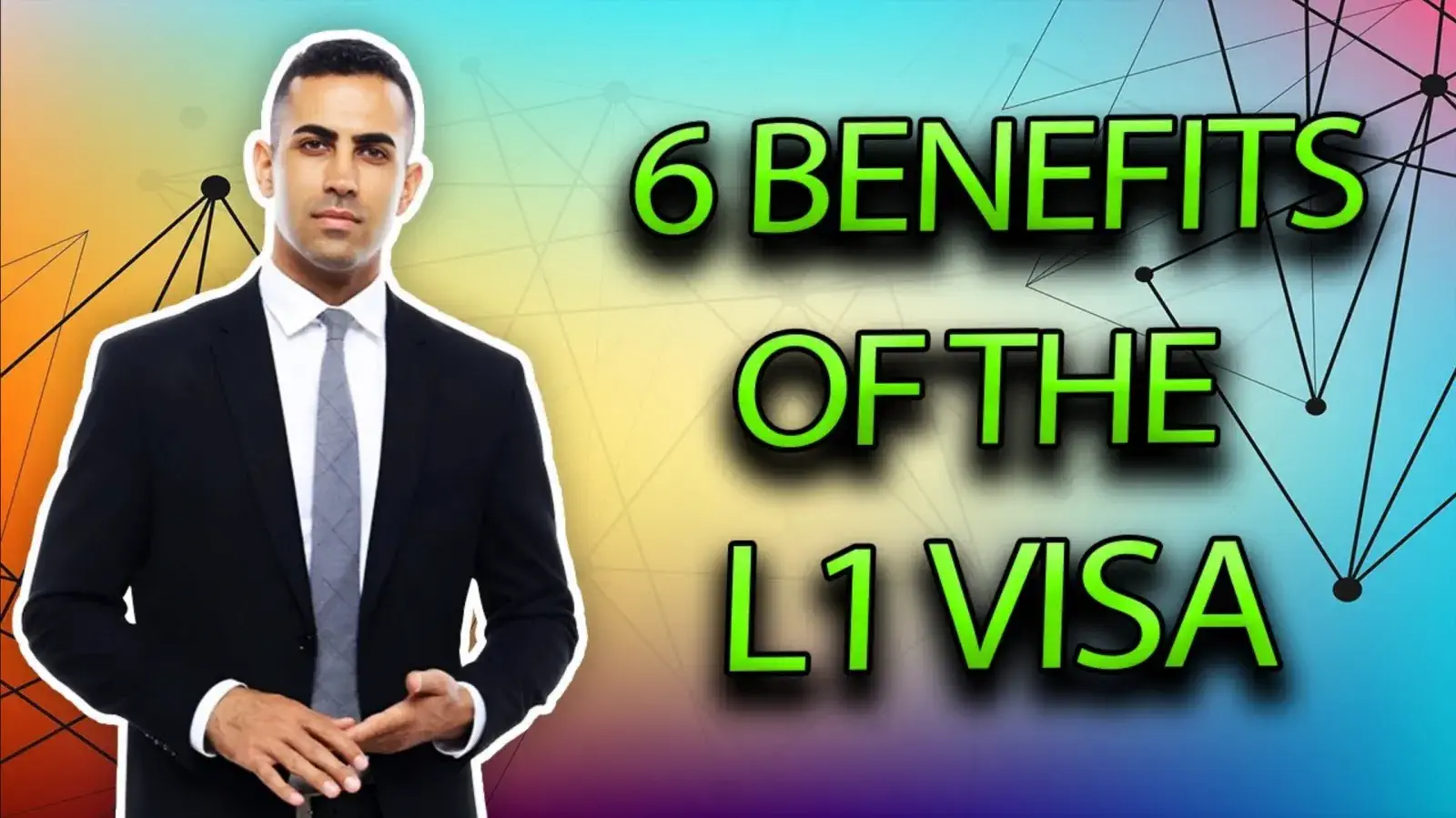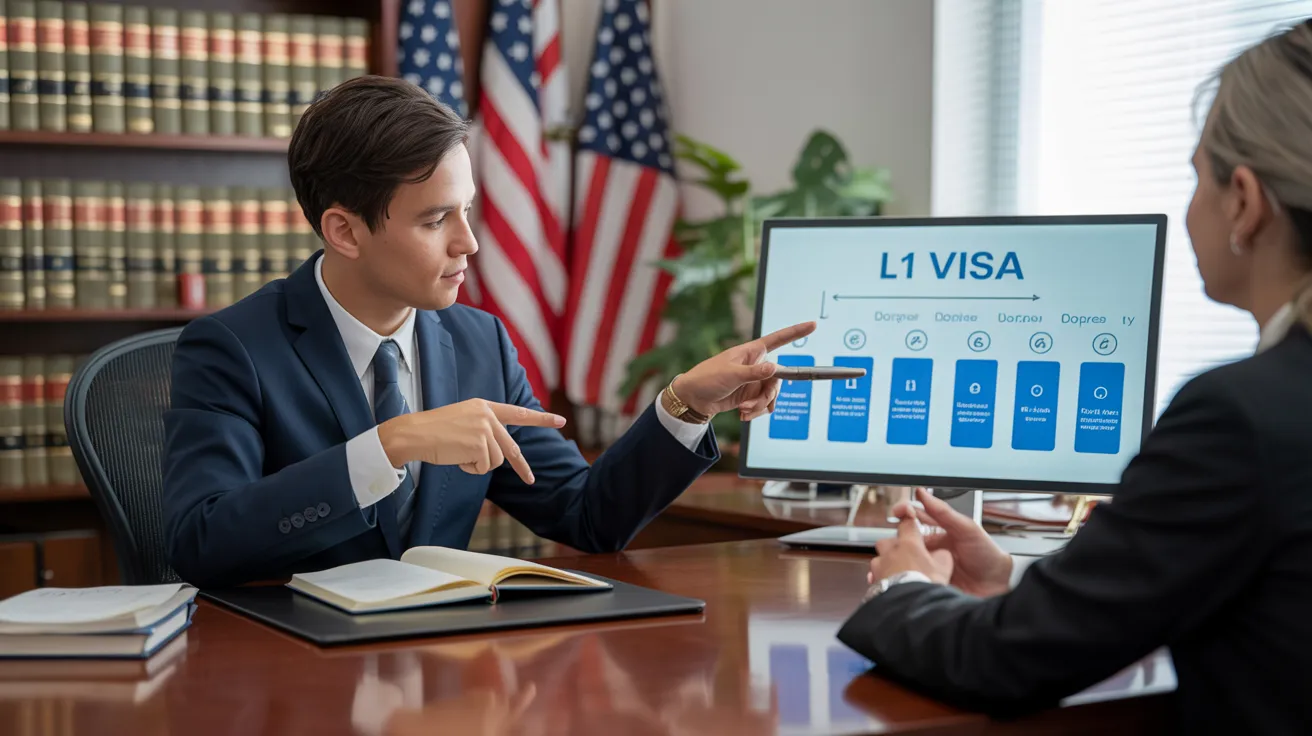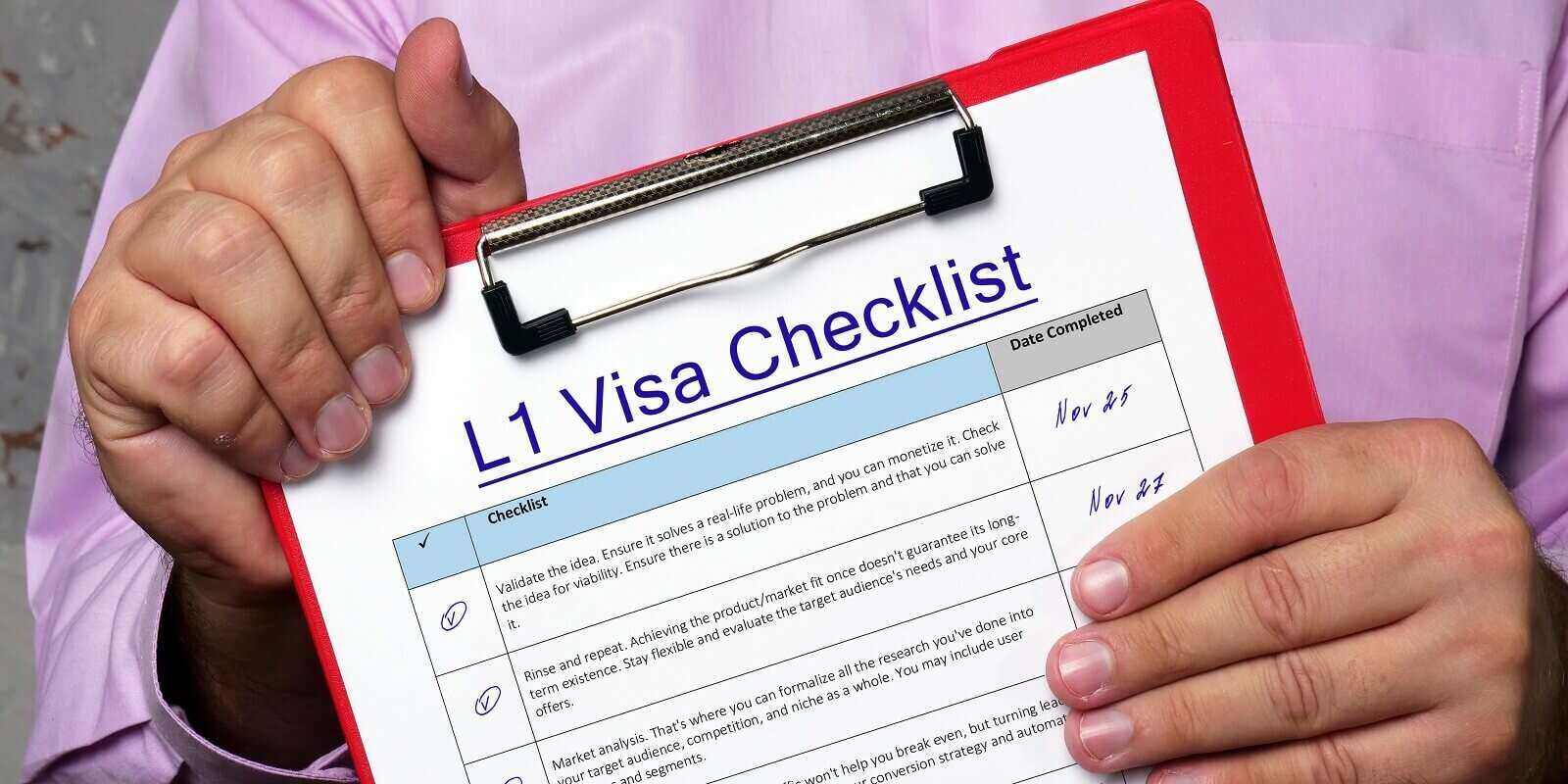Whatever You Need to Find Out About the L1 Visa: Benefits, Demands, and Much more
The L1 Visa serves as a crucial device for international firms seeking to transfer employees to the United States, facilitating both functional performance and the transfer of specialized understanding. With distinct categories for executives and specialized professionals, this visa provides countless advantages, including prospective paths to irreversible residency. Comprehending the qualification requirements and application procedure is essential for an effective shift. As we take a look at the complexities of the L1 Visa, it comes to be clear that navigating its complexities is vital for companies intending to take advantage of worldwide ability effectively. What challenges might you encounter in the process?
Overview of the L1 Visa
The L1 visa is a non-immigrant classification that allows firms to transfer employees from international offices to their U.S. branches, subsidiaries, or associates. This visa classification is particularly beneficial for multinational companies seeking to utilize their global skill swimming pool by transferring crucial workers to improve operations in the United States. The L1 visa is divided into two key subcategories: L1A for managers and executives, and L1B for workers with specialized expertise, each accommodating different business needs.The L1 visa promotes the seamless motion of qualified workers, thereby fostering global organization growth and functional effectiveness. With the L1A visa, companies can move individuals who hold supervisory or executive functions, enabling them to make critical choices and look after details divisions within the united state entity. Conversely, the L1B visa is created for staff members possessing specialized knowledge important to the business's interests, guaranteeing that the united state office benefits from special abilities and expertise.One noteworthy advantage of the L1 visa is its dual intent nature, which allows owners to use for irreversible residency while preserving their non-immigrant standing. Additionally, spouses and children of L1 visa holders can accompany them to the United States under the L2 visa category, which additionally permits job consent
Types of L1 Visas
Multiple sorts of L1 visas deal with the varied requirements of international business wanting to transfer employees to the United States. The two primary groups of L1 visas are L1A and L1B, each created for details roles and duties within an organization.The L1A visa is meant for supervisors and executives. This classification allows firms to transfer individuals that hold supervisory or executive settings, enabling them to look after operations in the U.S. This visa stands for a first duration of approximately 3 years, with the opportunity of extensions for an overall of up to 7 years. The L1A visa is specifically beneficial for companies looking for to develop a solid management existence in the united state market.On the other hand, the L1B visa is assigned for employees with specialized knowledge. This consists of people who have innovative competence in specific locations, such as exclusive innovations or special procedures within the firm. The L1B visa is also legitimate for an initial three-year duration, with extensions offered for as much as 5 years. This visa category is excellent for companies that call for employees with specialized abilities to improve their operations and preserve a competitive edge in the U. L1 Visa.S.Both L1A and L1B visas permit dual intent, meaning that visa owners can make an application for irreversible residency while on the visa. Comprehending the distinctions in between these 2 groups is vital for services planning to browse the intricacies of worker transfers to the USA successfully
Qualification Needs
To get an L1 visa, both the employer and the staff member have to satisfy particular qualification criteria established by united state migration authorities. The L1 visa is created for intra-company transferees, permitting multinational business to transfer staff members to their united state offices.First, the employer must be a qualifying organization, which suggests it needs to have a parent business, branch, subsidiary, or associate that is working both in the united state and in the international country. This relationship is vital for showing that the employee is being transferred within the same company framework. The employer should likewise have been doing business for at the very least one year in both locations.Second, the staff member needs to have been employed by the foreign firm for at least one continual year within the 3 years preceding the application. This employment should remain in a managerial, executive, or specialized understanding capacity. For L1A visas, which deal with supervisors and execs, the staff member has to demonstrate that they will remain to run in a comparable ability in the U.S. For L1B visas, meant for employees with specialized expertise, the private should have one-of-a-kind know-how that contributes substantially to the business's operations.
Application Process
Navigating the application process for an L1 visa involves a number of crucial actions that must be finished precisely to guarantee an effective outcome. The primary step is to figure out the appropriate category of the L1 visa: L1A for managers and executives, or L1B for staff members with specialized understanding (L1 Visa). This difference is significant, as it influences the documentation required.Once the group is determined, the U.S. company must submit Kind I-129, Request for a Nonimmigrant Worker. This form should include in-depth info about the firm, the staff member's duty, and the nature of the job to be carried out in the U.S. Accompanying paperwork normally consists of evidence of the relationship in between the U.S. and foreign entities, evidence of the employee's credentials, and details relating to the task offer.After submission, the united state Citizenship and Migration Provider (USCIS) will certainly assess the petition. If authorized, the staff member will be alerted, and they can then apply for the visa at a united state consular office or consular office in their home nation. This includes finishing Kind DS-160, the Online Nonimmigrant copyright, and arranging an interview.During the meeting, the applicant should offer different records, consisting of the approved Type I-129, evidence of work, and any additional supporting proof. Adhering to the interview, if the visa is provided, the staff member will receive a visa stamp in their key, enabling them to get in the united state to help the sponsoring company. Correct prep work and extensive documentation are essential to steering this process successfully
Benefits of the L1 Visa
One of the notable benefits of the L1 visa is its capability to facilitate the transfer of vital employees from international workplaces to the United States. This visa is specifically helpful for international companies looking for to preserve consistency in operations and management throughout boundaries. By allowing execs, managers, and specialized workers to operate in the U.S., companies can guarantee that their most essential skill is available to drive organization objectives.Another significant benefit of the L1 visa is its fairly uncomplicated application process compared to other job visas. Organizations can seek for the L1 visa without the requirement for a labor certification, which simplifies the recruitment of foreign employees. The visa can be granted for a preliminary duration of up to 3 years, with the possibility of expansions, assisting in lasting assignments.The L1 visa likewise provides a course to irreversible residency. Staff members on L1A visas (for managers and execs) can look for a Permit after one year, quickening their change to irreversible status. This function is an eye-catching motivation for talented people seeking security in the U.S. workforce.Additionally, L1 visa owners can bring their prompt member of the family to the united state under L2 standing, enabling partners and kids to stay and examine in the country, enhancing the general charm of this visa group. Generally, the L1 visa offers as a vital device for global organizations, promoting cross-border collaboration and skill mobility.
Typical Challenges
While the L1 visa offers numerous benefits for multinational companies and their staff members, it is not without its obstacles. One significant difficulty is the rigorous documents and qualification requirements imposed by the U.S. Citizenship and Migration Provider (USCIS) Companies should offer in-depth evidence of the foreign staff member's certifications, the nature of the service, and the qualifying partnership in between the united state and foreign entities. This procedure can be time-consuming and may need lawful competence to navigate successfully.Another challenge is the possibility for examination during the application procedure. USCIS officers might examine the legitimacy of business operations or the employee's function within the company. This analysis can bring about delays and even denials of the copyright, which can considerably impact the company's functional plans and the employee's career trajectory.Furthermore, the L1 visa is tied to the funding employer, which means that job modifications can complicate the visa standing. If an L1 visa owner wants to switch over companies, they have to often seek a different visa group, which can include complexity to their migration journey.Lastly, keeping conformity with L1 visa regulations is essential. Companies should assure that their staff member's duty straightens with the preliminary request and that the organization continues to meet the eligibility requirements. Failing to do so can cause cancellation of the visa, impacting both the staff member and the organization. These challenges demand thorough preparation and ongoing monitoring to guarantee an effective L1 visa experience.
Tips for Success


To effectively navigate the L1 visa procedure, careful prep work is essential. Begin by completely comprehending the details needs for the L1 visa group you are obtaining, whether L1A for supervisors and execs or L1B for staff members with specialized expertise. Collect all necessary paperwork early in the process, including evidence of your work background, business structure, and the nature of the organization operations.Engage legal guidance experienced in migration regulation to guide you with the complexities of the application. A lawyer can aid ensure that your application is total, exact, and engaging. They can additionally help in planning for prospective demands for proof (RFEs) by proactively resolving locations that might raise questions.Additionally, preserve clear interaction with your employer, who need to supply crucial assistance for your application. Confirm that they comprehend their obligations, consisting of filing the needed requests and giving paperwork that substantiates your role in the organization.Prepare for the visa interview by practicing response to usual questions concerning your specialist background and the nature of your work. Showing self-confidence and clearness can significantly affect the outcome of your application.
Regularly Asked Concerns
Can Family Members Accompany L1 Visa Holders?
Yes, member of the family can come with L1 visa holders. Partners and single kids under 21 years of ages are qualified for L2 visas, which enable them to live and research in the United States throughout the L1 owner's remain.
For How Long Can L1 Visa Holders Remain in the U.S.?
L1 visa owners can at first remain in the united state for approximately three years. This duration might be expanded, allowing a maximum remain of 7 years for L1A visa owners and five years for L1B visa owners
Is the L1 Visa a Twin Intent Visa?
The L1 visa is considered a twin intent visa, enabling holders to seek irreversible residency while maintaining their short-lived non-immigrant standing. This adaptability helps with long-term career opportunities for international workers within united state business.

Can L1 Visa Holders Get a copyright?
Yes, L1 visa owners can get a copyright (L1 Visa Requirements). The L1 visa sustains twin intent, allowing holders to pursue irreversible residency while keeping their non-immigrant standing, promoting a smoother transition to a copyright
What Occurs if an L1 copyright Is Rejected?
If an L1 copyright is refuted, the applicant may obtain a notification outlining the read more factors for denial. They can appeal the choice, reapply, or check out alternative visa choices depending upon their conditions and certifications.
Final thought
In summary, the L1 Visa works as an essential tool for international business looking for to move staff members to the USA. Recognizing the distinctions between L1A and L1B categories, in addition to the qualification needs and application procedures, is important for successful navigating of this non-immigrant classification. The benefits supplied, consisting of structured applications and paths to irreversible residency, additionally improve its charm. L1 Visa. Resolving common difficulties successfully can bring about a more favorable outcome in the copyright process